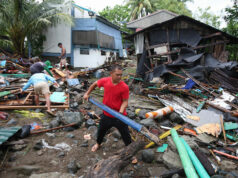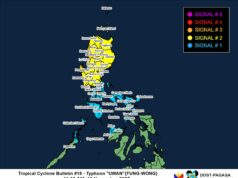Manila Bay water quality monitoring system launched
By Angelica Y. Yang
THE Department of Environment and Natural Resources (DENR), in partnership with the SM Group and with support from the Pasay City government, unveiled a water quality monitoring project in Manila Bay on Friday as part of the agency’s mandate to rehabilitate the polluted waters.
The program involves land- and marine-based monitoring probes, including seven water quality buoys, that will collect real-time data on the depth, temperature, conductivity, pH levels, dissolved oxygen and turbidity of the bay.
Four buoys are scheduled to be deployed off the Baywalk area, said DENR chief Roy A. Cimatu during the launching ceremony held at the SM By the Bay.
The project is in line with the Supreme Court’s order to restore the bay’s water quality to “recreational water class 1” or “Class SB” levels.
Coastal and marine waters under the Class SB level are those deemed suitable for bathing, swimming, skin diving, and other forms of contact recreation.
“We have an annual obligation to the Supreme Court on how far we have complied with the mandamus… we can do this by monitoring the waters,” the DENR chief said.
Data on the water’s various parameters can be viewed in real-time through a cloud-based platform connected to the water quality monitors.
The water quality probes, however, cannot capture other parameters such as fecal coliform level, total suspended solids, oil and grease, and E.coli, among others.
To monitor these factors, the DENR said there will be a monthly sampling and lab analysis of water samples.
Pasay City Mayor Imelda G. Calixto-Rubiano, for her part, said the equipment are important in implementing a scientific method of monitoring.
Meanwhile, Mr. Cimatu, when sought for comment on the controversial use of artificial white sand as part of Manila Bay’s rehabilitation, said DENR is “prepared to defend their decision.”



